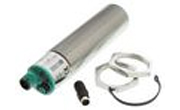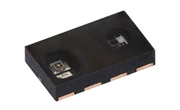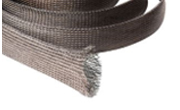Ultrasonic sensors play a crucial role in modern vehicle barrier systems, offering reliable detection of vehicles and objects beneath barriers.
utilising wide projection cones, consistent wave propagation, and precise distance measurement, these sensors effectively monitor diverse shapes and sizes, ensuring safety and preventing damage. This article explores the operational principles of ultrasonic sensors, their advantages in retroreflective mode, and the impact of environmental factors on their performance. Additionally, it covers optimal mounting options for parking applications and highlights how ultrasonic sensors enhance vehicle detection and management in barrier systems, making them indispensable for parking lots and garages.
Retroreflective technology of ultrasonic sensors for vehicle detection
In retroreflective mode, the ultrasonic transducer functions as both an emitter and receiver. Unlike diffuse mode sensors, the signal is continuously reflected by a fixed reflector, which can be a metal or plastic panel or even an existing background like a wall or conveyor belt. The sensor receives a constant echo from the reflector when no object is present. When an object enters the sensing range, it alters the reflection of the ultrasound signal, allowing the sensor to detect the object's presence.

Figure 1: Retroreflective mode of operation in ultrasonic sensors (Source)
In retroreflective mode, ultrasonic sensors use a fixed reflector to bounce the signal back continuously, as shown in Figure 1.
In retroreflective mode, switching is triggered in the following scenarios
- The sensor detects a small object in front of the reference reflector, resulting in an additional echo from the reflector.
- A large object completely obscures the reference reflector, so the sensor only receives an echo from the large object and none from the reflector.
- A large, slanted object in front of the reflector blocks it, causing the sensor to receive no echo from either the object or the reference reflector.
- Retroreflective sensors are particularly effective for detecting sound-absorbing objects and those with unreliable surfaces, such as smooth or slanted surfaces like car windshields. They are easy to install with just one sensor head and have no blind spots in this mode. The switching frequency is lower compared to thru-beam sensors.
Environmental factors affecting ultrasonic sensing
- Air temperature: Significant changes in air temperature can affect the signal amplitude measured by the sensor. As temperature varies, the speed of sound in the air changes, which can alter the sensor's detection range and accuracy. Configuring ultrasonic sensors for parking systems, it's important to account for temperature fluctuations to ensure reliable performance across different conditions.
- Barometric pressure: Barometric pressure has a major effect on the signal amplitude. Variations in pressure can influence the density of the air and, consequently, the propagation of sound waves. Calibration and adjustment might be necessary to maintain accurate measurements in varying atmospheric pressure conditions, particularly in areas with significant elevation changes.
- Air humidity: The influence of air humidity on ultrasonic sensors is minimal compared to temperature and pressure. Humidity levels generally have a negligible effect on the sensor’s performance. While humidity changes do not usually require specific adjustments, sensors should be protected from extreme moisture conditions that could affect their functionality.
- Altitude above sea level impact: Altitude affects the air density, which in turn influences the speed of sound and sensor readings. However, the impact is relatively minor. In high-altitude locations, sensor calibration might be necessary to compensate for changes in air density and ensure accurate detection.
- Air currents: Ultrasonic measurements are generally unaffected by normal air currents, including winds up to force 7 (50–61.5 km/h), provided that the object being measured has reflective properties like a standard reflector. However, during stormy weather or hurricanes, measurements may become unstable, potentially leading to a loss of signal. It's important to note that no definitive conclusions can be made regarding the effects of varying air current directions and speeds on the speed of sound. For instance, extremely hot objects, such as red-hot metal, can create significant air turbulence, which may scatter or deflect the ultrasound, resulting in the absence of a detectable echo.
- Paint mist: paint mist does not affect the operation of ultrasonic sensors, it is crucial to prevent the mist from settling on the active transducer surface, as this can reduce the transducer's sensitivity and compromise measurement accuracy.
- External noise: External noise is typically distinguishable from the target echoes and does not usually interfere with sensor operation. However, if the external noise occurs at the same frequency as the ultrasonic sensor, it is essential that the noise level does not exceed that of the target echoes. This situation might occur in environments like silos during stone filling.
- Types of gas: Sensors in other gases, such as carbon dioxide, may result in significant measurement errors or complete functional failure due to variations in the speed of sound and increased attenuation.
To correct environmental factors affecting ultrasonic sensing, solutions to be implemented
- Air temperature: Temperature Compensation Algorithms: Implement algorithms in the sensor’s software to adjust readings based on the temperature. These algorithms use the relationship between temperature and the speed of sound to correct measurement errors. Periodically calibrate sensors to account for temperature changes and maintain accuracy.
- Barometric pressure: Use pressure sensors to monitor barometric pressure and adjust ultrasonic measurements accordingly. Integrate pressure data into compensation algorithms to correct for variations in air density. For sensors deployed in areas with significant elevation changes, calibrate the sensors for local barometric pressure conditions.
- Air humidity: Protective Enclosures: Use enclosures to protect sensors from extreme moisture and humidity, which could affect their functionality over time. Minimal Adjustment: Generally, no specific adjustments for humidity are required, but ensure sensors are designed to operate in expected environmental conditions.
- Altitude above sea level: Adjust the sensor calibration to account for changes in air density at different altitudes. This can involve using algorithms that factor in altitude-related air density variations.
- Air currents: Ensure that sensors are securely mounted to minimise the effects of strong air currents or turbulence. Filtering and Signal Processing: Use signal processing techniques to filter out noise and correct for any disturbances caused by extreme weather conditions.
- Paint mist: Transducer Protection: Implement protective covers or coatings to prevent paint mist from settling on the sensor’s transducer surface. This helps maintain sensitivity and measurement accuracy. Schedule regular cleaning of sensor surfaces to remove any accumulated mist or debris.
- External noise: Design sensors with frequency filtering capabilities to distinguish between target echoes and external noise. This can help in environments with high noise levels. Implement noise isolation techniques to minimise interference from external sources.
- Types of gas: Calibrate sensors for the specific gas environment they will be used in, considering the variations in speed of sound and attenuation properties. Alternative Sensing Technologies: Consider using different sensing technologies better suited for environments with significant gas variations.
Mounting options
When mounting sensors for parking applications, especially those with double-material detection, the response time of the sensors is crucial for determining the optimal installation angle.
- Vertical installation: For sensors with a response delay of 6 ms or more (typically 15 ms for standard sensors), vertical installation is generally feasible and simplifies mounting and alignment. These sensors can handle vertical mounting without significant performance issues, making them convenient for various parking scenarios. Sensors with a response time shorter than 6 ms are less suitable for vertical mounting due to potential issues like standing waves and signal interference. Such sensors should be mounted at an angle between 20° and 40° from the vertical to avoid unstable measurement results and ensure accurate detection.
- Incline mounting: For optimal performance and a broad range of material detection, incline mounting is preferred over vertical installation. This approach maximises the sensor's performance and allows for effective threshold adjustment. While vertical mounting with sensors having a response time of 15 ms or slower incurs minimal performance loss, incline mounting generally offers better results.
For parking applications, choose vertical mounting for sensors with longer response times for ease of installation, while incline mounting is recommended for sensors with shorter response times to ensure stable and accurate performance.
Vehicle Detection in Barrier Systems with Ultrasonic Sensors
In parking lots and garages, entry is managed using barrier gate arm systems that must not lower when a vehicle is underneath. Ultrasonic sensors are particularly effective for this task as they detect objects regardless of vehicle type or color and monitor the entire area below the arm. In parking garages, retroreflective mode ultrasonics are also used to count vehicles and identify available parking spaces.

Figure 2a: Barrier gate arm systems (Source)
These sensors are easy to install within the barrier system housing. When multiple barriers are installed close together, the ultrasonic sensors need to be synchronised to prevent mutual interference.
When mounting and aligning the sensors, ensure they are installed at a sufficient distance from the ground, potentially angled slightly upwards, to avoid the projection cone contacting the ground. Proper installation height is crucial, particularly as the projection cone size increases in lower temperatures. If necessary, adjust the projection cone size using parameterization software. For outdoor barrier systems, ensure the ultrasonic sensors are suitable for external environments.

Figure 3a: Ultrasonic sensors monitor the entire area below the barrier

Figure 3b: Ultrasonic sensors emitting sound waves in a cone-shaped pattern (Source)
Ultrasonic sensors reliably detect vehicles beneath barriers Figure 3a. Ultrasonic sensors detect vehicles and objects beneath barriers by emitting sound waves in a cone-shaped pattern, creating a wide detection area that covers various shapes and sizes Figure 3b. These sensors use mechanical ultrasonic waves that propagate through the air and reflect off objects regardless of their color, surface texture, or material. When these waves encounter an object, they reflect to the sensor, which then measures the time it takes for the waves to return. This time measurement allows the sensor to calculate the precise distance to the object using the speed of sound.
The wide projection cone and high sensitivity of ultrasonic sensors enable them to detect non-planar parts and smaller objects, such as bike racks and trailers, making them essential for applications like vehicle barriers. Regardless of the vehicle's color or material, the sensor accurately measures the distance to any object beneath the barrier. The sensors continuously monitor the area in real-time, sending signals to the control system to prevent the barrier from lowering if an object is detected. This mechanism ensures the barrier does not lower when an object is present, preventing potential damage.
Ultrasonic sensors use wide projection cones, consistent wave propagation, and precise distance measurements to ensure safety and prevent damage by reliably detecting objects beneath barriers. They are used to activate barriers, parking ticket machines, gates, or bollards when a vehicle is approaching. As a combined sensor, they can also prevent vehicles from being damaged by the moving part of the gate or barrier. They are an alternative for applications in which loop detectors cannot be used.









